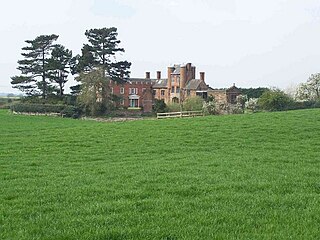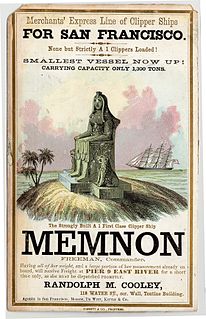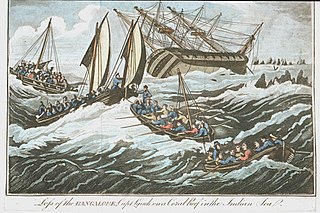Related Research Articles

Robert Banks Jenkinson, 2nd Earl of Liverpool, was a British Tory statesman who served as Prime Minister of the United Kingdom from 1812 to 1827. He held many important cabinet offices such as Foreign Secretary, Home Secretary and Secretary of State for War and the Colonies. He was also a member of the House of Lords and served as leader.

The Posthumous Papers of the Pickwick Club was Charles Dickens's first novel. Because of his success with Sketches by Boz published in 1836, Dickens was asked by the publisher Chapman & Hall to supply descriptions to explain a series of comic "cockney sporting plates" by illustrator Robert Seymour, and to connect them into a novel. The book became Britain's first real publishing phenomenon, with bootleg copies, theatrical performances, Sam Weller joke books, and other merchandise. On its cultural impact, Nicholas Dames in The Atlantic writes, “Literature” is not a big enough category for Pickwick. It defined its own, a new one that we have learned to call “entertainment.” Published in 19 issues over 20 months, the success of The Pickwick Papers popularised serialised fiction and cliffhanger endings.

Augustus Snodgrass is a fictional character in Charles Dickens's first novel, The Pickwick Papers (1836). He considers himself a Romantic poet, though there is no mention of any of his own poetry in the novel.
Paul 'Patch' Atcheson is a former Wales international rugby league footballer who played in the 1990s and 2000s. He played at representative level for Great Britain and Wales, and at club level for the Widnes Vikings, Wigan, Oldham Bears and St Helens, as a fullback.

Sir Edward Littleton, 1st Baronet was a 17th-century English Baronet and politician from the extended Littleton/Lyttelton family, the first of a line of four Littleton baronets with Pillaton Hall as their seat. He initially joined the Parliamentarians during the English Civil War. Having tried unsuccessfully to find a third way, he switched his support to the Royalist cause – a decision that led to his financial ruin, as large debts made it impossible to redeem his estates from sequestration after the victory of Parliament.

The Memnon was the first clipper ship to arrive in San Francisco after the Gold Rush, and the only clipper to arrive in San Francisco before 1850. Built in 1848, she made record passages to San Francisco and to China, and sailed in the first clipper race around Cape Horn.
Colonel Nathaniel Rich sided with Parliament in the English Civil War. He was a colonel in Oliver Cromwell's New Model Army.
Warren Hastings was built in 1789 at Calcutta, India. Her registry was transferred to Great Britain in 1796. In 1805 she was sold and her new owners renamed her Speke. She made three voyages transporting convicts from Britain to New South Wales. After her first convict voyage she engaged in whaling.

Nonsuch was launched at Calcutta in 1781 as the first large vessel built there. She was designed to serve as either a merchantman or a man-of-war. She spent the first 12 years of her career as a merchant vessel, carrying opium to China amongst other cargoes. After the outbreak of the French Revolutionary Wars in 1793 her owner frequently hired her out as an armed ship to the British East India Company (EIC). She participated in an engagement with a French naval squadron and recaptured an East Indiaman. She also made two voyages for the EIC. After the Peace of Amiens in 1802 the EIC paid her off; as she was being hauled into a dockyard for repairs she was damaged and the decision was taken to break her up.
Perseverance was built in 1797 at Stettin or Sweden and came into British hands in 1799. She made one voyage under charter to the British East India Company (EIC), and was lost in July 1803.

Bangalore was built at Calcutta in 1792 and took on British registry in 1797 after having made a voyage from Bengal to London under charter to the British East India Company (EIC). She then traded between London and India. She was wrecked in 1802 in the Flores Sea.
Exeter was launched at Calcutta in 1793. She made three voyages from Calcutta to England for the British East India Company (EIC). She was lost in August 1806 in a hurricane while returning to London from Jamaica.
Hind or Hinde was launched at Hull in 1800. After a voyage to Russia she made one voyage for the British East India Company. She then became a West Indiaman. She was wrecked in April 1815.
Medway was launched at Fort William, Calcutta in 1801. She immediately sailed to Britain under charter to the British East India Company (EIC). There her owners sold her. She traded with Madeira and the Americas before she foundered in 1812.
Sarah was launched at Bombay in 1792. In 1801 she participated as a transport in the British expedition to the Red Sea. Her captain deliberately ran her ashore in 1805 to prevent the French from capturing her.
Aurora was launched in 1790 at Calcutta. The first 10 years of her career are currently obscure. In 1801 she made a voyage to England for the British East India Company (EIC), and then was briefly registered in England. She returned to India to continue to sail as a "country ship" until she was sold to Portuguese or Spanish owners in 1811. She returned to British ownership circa 1816 and made a second voyage for the EIC, this time from China to England. She returned to English registry and made one voyage to India under a license from the EIC. She then switched to sailing between Liverpool and Quebec and was lost in the Atlantic around 1822.
Fishburn was launched at Sunderland in 1799. She originally traded between England and Riga, where the Russian government seized her in 1800. The seizure gave rise to two court cases, one concerning a crewmember's claim for wages during her detention and one arising out of her owner's sale of Fishburn during the detention. New owners changed her trade to Liverpool–Honduras or Yucatan. She was wrecked in 1803 while sailing from Honduras back to London.
Shah Ardaseer was built at Bombay, probably in 1786. English transliterations of her name show her as Shah or Shaw + Adaseer, or Ardaseer, or Ardasier, or Adasier, or Ardasheer, or Ardeseer, or Ardesir. A fire on 13 September 1809 at Bombay burnt her. She then may have been recovered, repaired, and enlarged to become the hulk HMS Arrogant, which was moved to Trincomalee in 1822 and sold there in 1842.
Pitt Clubs were private members clubs formed in Great Britain in the 18th and 19th century to memorialise William Pitt the Younger (1759–1806). Although the London Pitt Club was formed in 1793, it was only after the death of Pitt that more "country" Pitt clubs were established outside London.
The Society of Ship-Owners of Great Britain (SOGB) was an organisation established by British ship-owners in 1802 to defend their interests by opposing breaches of the Navigation Acts. The decision to form the organisation was reached at a meeting held on 22 June in London.
References
- ↑ Garnett, S. Alan (1927). "Pitt Clubs and their badges" (PDF). British Numismatic Journal. 19 (Second Series, IX): 213–218.
- ↑ Jenkinson, Charles; Atcheson, Nathaniel (1807). Collection of interesting and important reports and papers on the navigation and trade of Great Britain, Ireland, and the British colonies in the West Indies and America...Printed by order of The Society of Ship-Owners of Great Britain. London: J. Stockdale [etc].
- ↑ The Gentleman's magazine, Volume 96, Part 1; Volume 139